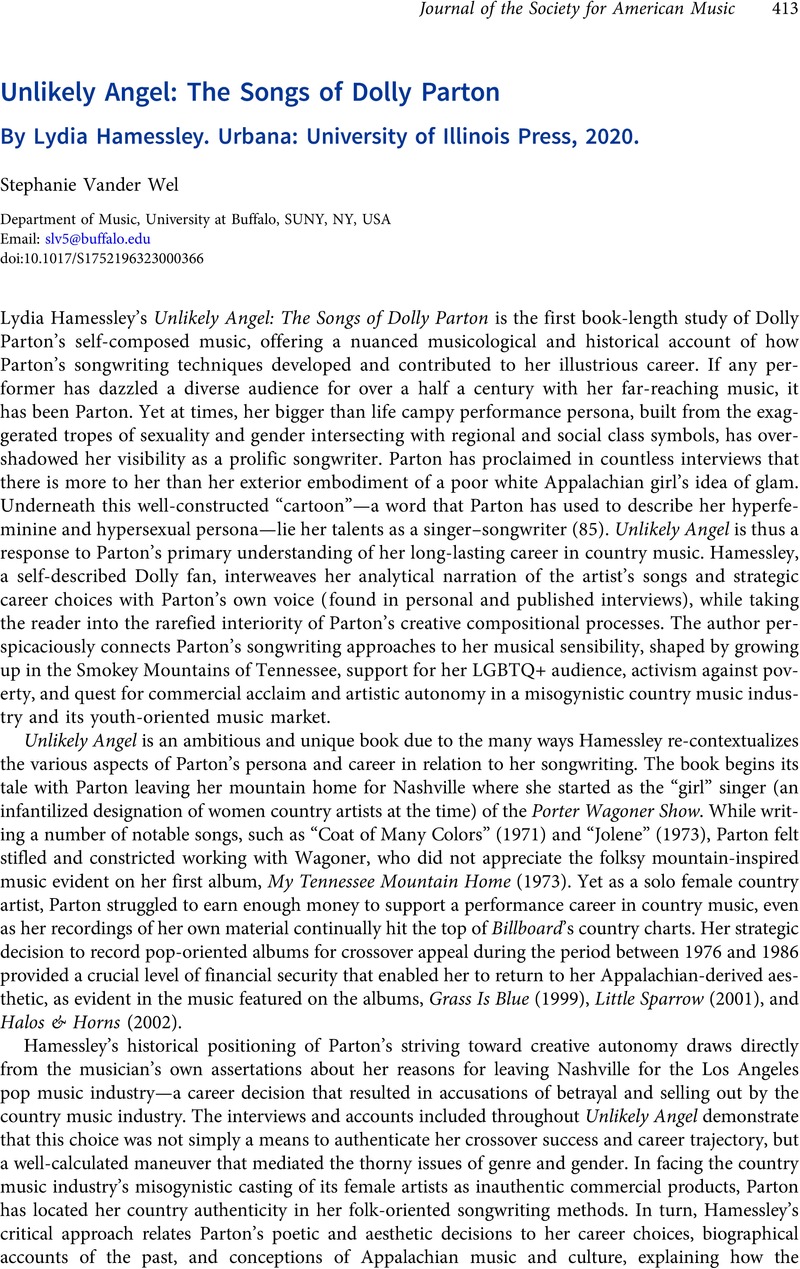No CrossRef data available.
Article contents
Unlikely Angel: The Songs of Dolly Parton By Lydia Hamessley. Urbana: University of Illinois Press, 2020.
Review products
Unlikely Angel: The Songs of Dolly Parton By Lydia Hamessley. Urbana: University of Illinois Press, 2020.
Published online by Cambridge University Press: 16 November 2023
Abstract
An abstract is not available for this content so a preview has been provided. Please use the Get access link above for information on how to access this content.

Information
- Type
- Book Review
- Information
- Copyright
- Copyright © The Author(s), 2023. Published by Cambridge University Press on behalf of the Society for American Music
References
1 Lorde, Audre, Sister Outsider: Essays and Speeches (Freedom, CA: Crossing Press, 1984), 54Google Scholar.

